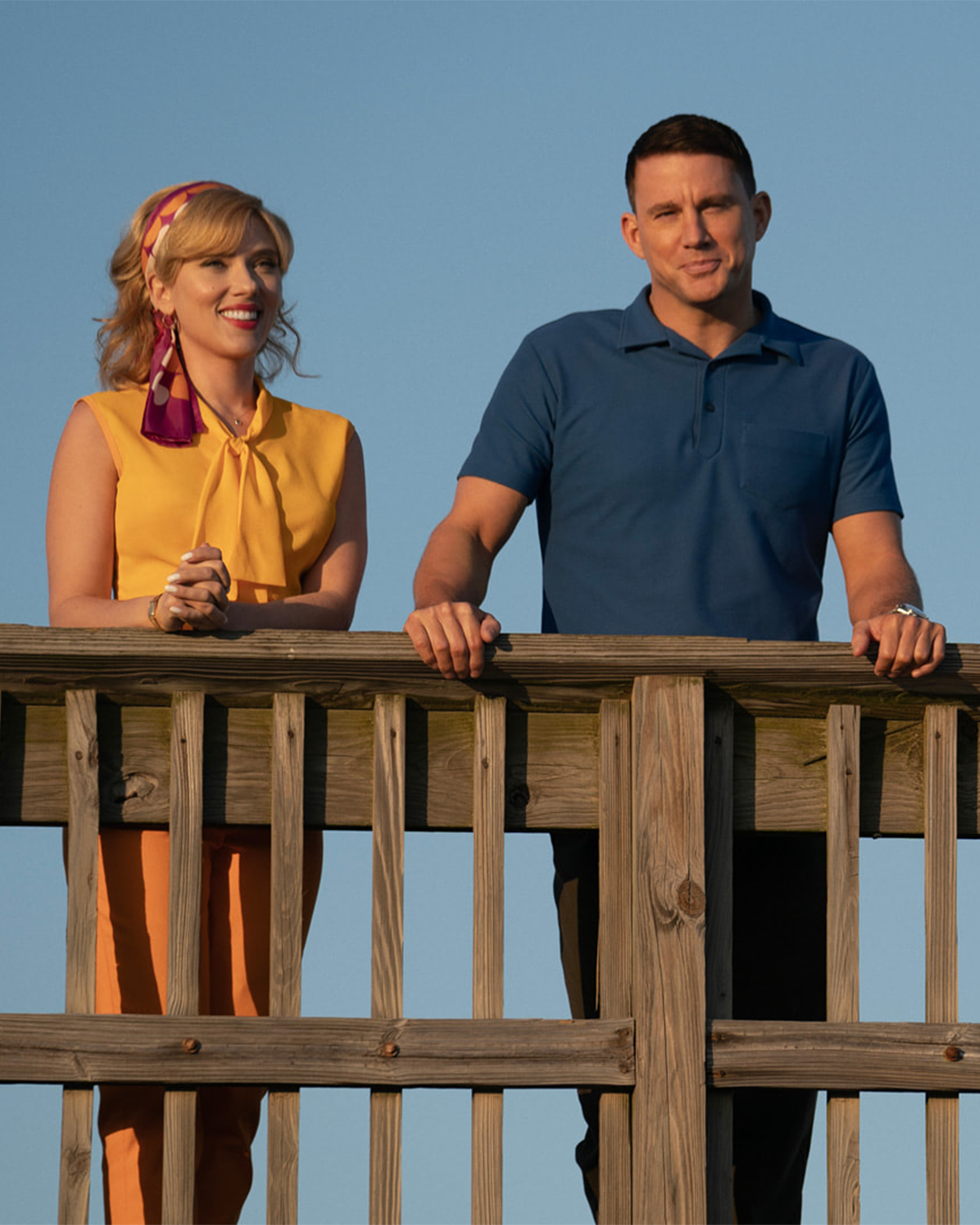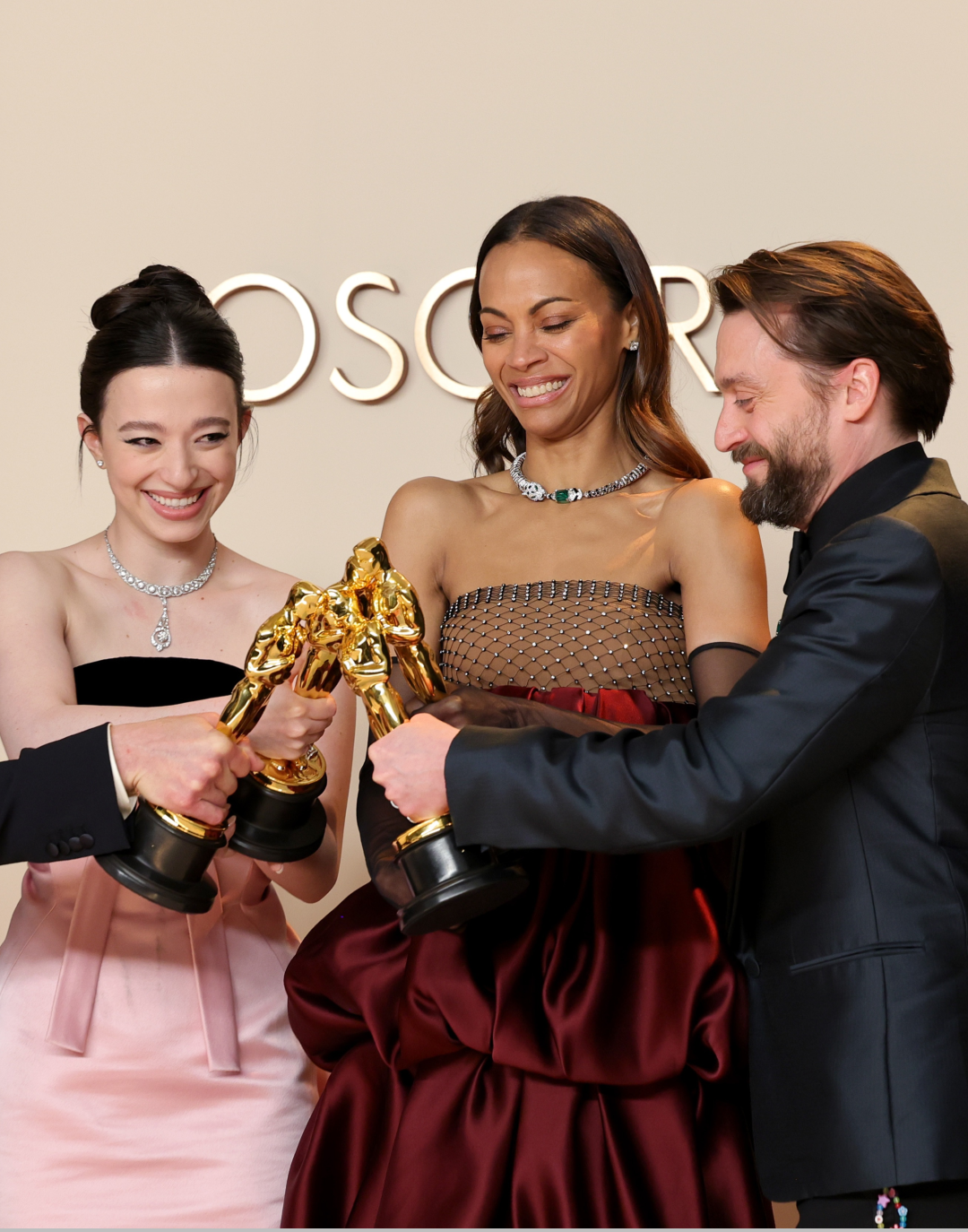
"Fly Me to the Moon" and the satire of conspiracy Scarlett Johansson and Channing Tatum starring the rom-com that tackles NASA and advertisement
They say that social media has altered reality, yet a film has arrived in cinemas where those who distort what we consider true are entirely removed from the famous and feared “black mirror.” The tool used in Fly Me to the Moon – The Two Faces of the Moon, a rom-com with Scarlett Johansson and Channing Tatum, is advertising. An art, in its own way, chameleon-like and mutable, which has shown over the decades that it can adapt each time to the new media proposed by technological advancement. There was also a time, in 1969, when one of humanity's most shocking events had to become merchandise. A historical moment revisited in the film directed by Greg Berlanti – who replaced director Jason Stateman, as happened with the actor change from Chris Evans to Channing Tatum – and inspired by conspiracy theories around the Apollo 11 moon landing. Although the film focuses a good part of its narrative on the White House's intentions to stage a fake moon landing in case of the true mission's failure, it is the character of the protagonist Kelly Jones, and her fierce and vital activity in the terrestrial territories of marketing that captivates.
With a murky past and the continuous proposal of new ideas and identities to match every potential client, Kelly possesses the innate gift of a salesperson. She does not just use impeccable rhetoric but also implements the most acute strategies to increase demand and supply, making her the ideal person to turn to for both restoring NASA's image (to justify the continuous money spent and the hopes that an entire nation has invested in the greatest of American dreams) and staging a possible alternative - and cinematic - version of the moon landing. Even without Stanley Kubrick, in an ironic reference that suggests the director of 2001: A Space Odyssey as the true author of the footage that marked “a small step for man and a giant leap for mankind.”
i’m actually obsessed fly me to the moon was so good and my girl scarlett johansson was once again incredible pic.twitter.com/gyeWo00Ray
— dee (@spuffylovebot) July 6, 2024
And while the future already looks at how to create advertising spaces on the moon, Fly Me to the Moon retraces with an irreverent and cheeky tone, always with a brilliant romantic undertone and a touch of fiction, the genesis of a brand that we would no longer just associate with the government agency at 300 E St SW in Washington DC, blending pages of cinema and history, writing a treatise on what advertising is and what nerves it works on. In a sassy and lively version of the more serious and formal Don Draper from Mad Men, Scarlett Johansson’s Kelly soon explains that the way to keep the public’s interest in NASA and its operations alive is to turn it into a recognizable, accessible, and, above all, marketable brand in any form or guise. Do astronauts eat? So do we. Then why not putting their faces on breakfast cereal boxes, the most important meal of the day. In space, time is relative? Absolutely, but it's always better to have a watch on hand, just in case you manage to get home in time for dinner. One of the most recent examples of cinematic product placement comes from space: the Hamilton Watch worn by Matthew McConaughey's character in Christopher Nolan’s Interstellar, a symbolic object of the bond between father and daughter, as well as an excellent way to incorporate advertising into a work.
@guywithamoviecamera my first words would be: “moon good ” go see #FlyMeToTheMoon in theaters now @flymetothemoon #scarlettjohansson #sonypicspartner Fly Me To The Moon - 2008 Remastered - Frank Sinatra
And this is exactly what the protagonist of Berlanti's film will try to do: turn the NASA logo into a recognizable signature that everyone wants to own or at least have a piece of. But it’s not just objects that make a name an entire mythology. By creating a network of relationships with clients and the public, Kelly arranges interviews, organizes TV appearances, and knows perfectly which spots to occupy in the evening news. Just like today’s influencers schedule posts at the best times when there seems to be the most traffic on social media. A strong resonance immediately comes to mind between the immaterial world of the web and the stage where the protagonist operates, showing how the construction of the self, personal or material, is a concept entirely disconnected from mere historical or generational issues, which we talk about so much and are experiencing now. To deceive others, it is not necessary to use a cover filter or study the best pose for photos to share on Instagram but rather to convey a specific perception to those you want to deceive, whether it is to make them believe you are someone else or simply to sell a story.
That is why, although completely different and both excellent, there is another recent film that presents an elective affinity pattern with Fly Me to the Moon. In Richard Linklater’s film Hit Man – Killer by Chance, the protagonist played by Glen Powell – co-screenwriter with the director of Before Sunrise – is an ordinary philosophy professor hired as a fake sniper by the police to meet those who want to hire him and prevent potential murders. Knowing the notions of Id, Ego, and Super-Ego well, the man decides to create ad hoc characters for each person he meets, to make them believe he is the right assassin and induce them to think he is the person they were looking for. The rules of the personality game, fundamental in both Fly Me to the Moon and Hit Man, aim to consider what type of individual everyone desires to be. But it also shows how easy it is, if well prepared, to deceive or refute the other’s idea, convincing them with a few tricks and letting detailed storytelling and a particularly plausible appearance instill trust.
Fly Me to the Moon is a genuine crowd pleaser full of heart, charm & laughs. Scarlett Johansson & Channing Tatum have terrific chemistry while Jim Rash steals the show. It’s predictable, overlong & drags heavily in the third act but it’s still a cute, breezy & enjoyable watch pic.twitter.com/rj3fDqzXBF
— Connor (@ConnorMovies) July 13, 2024
The crafting of a narrative, therefore, to be intriguing and marketable must have a background for people to investigate, protagonists to become attached to, and an objective that seems bigger than the cosmos itself, which in the film with Johansson and Tatum becomes an irresistible sense of rooting while wearing a T-shirt with the NASA logo. Everyone had to want to become astronauts after Kelly’s work, and those afraid of space had to at least hope to become their friends. And this is because, simply, someone else decided it. With a retro atmosphere and a light touch that supports the constant interplay between star story and love story, Fly Me to the Moon foreshadows the wild advertising that major brands would like to ignite among planets and shows that, indeed, everything is (unfortunately?) marketable. Whether it’s the moon or one’s identity. Certainly not the most genuine message, but the truest (and, in any case, the protagonist will learn a moral lesson at the end of the film). Impossible not to think about it, especially now that we will see T-shirts, pens, pencil cases, posters, phone covers, and bags with the NASA logo around, perhaps bought from their official merchandising website.













































